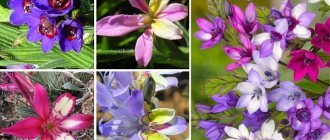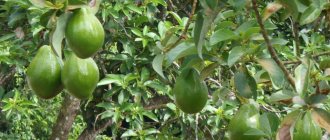Originality and unpretentiousness are the two main criteria by which gardeners choose summer flowers for flower beds. The maiden chrysanthemum fully satisfies these requirements: the spectacular flowering of lush white inflorescences-baskets, independent of watering and planting location, makes this flower an ideal option for decorating a flowerbed, edging or mixborder.
Description
The name comes from pyretos, which translates into Russian as “fever”. Some species are actually used in medicine as powerful antipyretics. It was first mentioned in the articles of Dioscarides (1st century AD) as an effective medicine for headaches and arthritis. In the 17th century, the tanacetum flower was recognized as the best remedy for migraines.
Feverfew
People often confuse it with chamomile and call it chamomile because of its similarity with another species. Depending on the variety, the length varies from 5 (dwarf varieties) to 150 centimeters (tall varieties). Flowers can be either simple or double or semi-double. Various colors: yellow, red, crimson. They are grown in mixborders and flower beds, next to trees and other crops. Strengths include:
- A long flowering period – it pleases with bright colors all summer long.
- Unpretentiousness.
- Frost resistance.
If you're short on time or just getting started with flowers, planting and caring is the perfect solution. Visually, it looks like a chamomile and will appeal to fans of this culture. The difference is in the variety of colors and a more lush core.
Beneficial features
Not everyone knows that maiden chrysanthemum has a large number of beneficial properties. Its name comes from the fact that its action can relieve the pain that girls experience during menstruation. And in ancient times, a decoction of this miraculous plant was used as a pain reliever during childbirth.
In addition, this plant has anti-inflammatory and antipyretic properties. But that's not all of its useful characteristics. Maiden's chamomile has been used for household needs since ancient times and to this day.
This flower amazes with its supply of useful substances that can relieve pain and relieve inflammation.
How does it reproduce?
To increase the population, use any of the following methods:
- Division. As soon as the bush has bloomed, dig it up and carefully shake off the soil from the roots. They are divided into several rosettes, which are planted separately. Care is the same as for adult specimens. Experienced gardeners advise dividing regularly. The procedure promotes rejuvenation.
Planting maiden primrose - Cuttings. For propagation, root shoots are taken. Cuttings are rooted in the summer, but choose a shaded place and cover with film. Then the young seedlings will not dry out.
- Seeds. For a plant such as pyrethrum, growing from seeds is also relevant. But the problem is that daughter bushes often lose the characteristics of their parents. If you just need to decorate the area with new flowers, feel free to sow the collected seeds. If the priority is to preserve the existing characteristics of the variety, try propagation by other methods.
Technology for growing pyrethrum seedlings from seeds: planting rules and care in open ground
A plant that is similar in appearance to aster, chrysanthemum and chamomile at the same time attracts many gardeners not only with its beauty - pyrethrum.
This flower has different names, depending on its original habitat. This is how you can hear the name Persian chamomile, or Dalmatian, as well as Caucasian. The color range of the species is varied. The culture itself belongs to the Astrov family, which indicates the plant’s love for warmth and sun. This is the main reason why growing pyrethrum from seeds is the most profitable.
Growing
Let's look at propagation by seeds in detail. The pyrethrum plant has small seeds. To simplify sowing, they are mixed with sand. Sowing is carried out in early spring, deepening the seeds by 5 mm. To simplify the task, the seeds are simply scattered over the surface in an even layer. For watering use a spray bottle. The container is covered with film, but you can limit it to glass, and place it in a sunny and warm place (+20). When the seedlings appear, the glass is removed. Picking begins after the appearance of the second leaf. Before planting, they are hardened for two weeks.
Autumn sowing
Residents of the southern regions can grow the flower using the seedless method. Seeds are sown in September, germination rate is high. The seeds are not soaked, but the soil is loosened. Lay a groove five centimeters deep and moisten it well. Scatter the seeds in a thick layer and place a little soil on top. There is no need to make a shelter. The seeds quickly take root and overwinter well. Already in March they will delight you with bright buds.
Features of care. Watering
As mentioned above, the “chamomile double” is completely unpretentious in care. It is drought-resistant and requires almost no fertilizing. Young plants are given more attention - they are regularly watered and weeds are removed.
Growing feverfew
Occasionally, loosen the soil so that the moisture does not stagnate and the roots receive enough oxygen. In the future, watering is reduced, since the plants are strong enough and can suppress weeds.
Is flowering delayed, flower growth slows down? Mullein is applied or fed with other fertilizers.
Preparing for winter
As soon as flowering ends, it is recommended to cut off the resulting flower stalks. In autumn, with the approach of cold weather, the stems are also cut off, leaving 10 centimeters. In the middle zone, pyrethrum grows well and does not need additional shelter. It's another matter if you live in regions with snowless but cold winters. The root zone is mulched with leaves and covered with spruce branches.
Planting methods
Maiden chrysanthemum propagates by seeds. Sowing of collected seeds is carried out from March to April in indoor or greenhouse conditions to obtain seedling material. But sowing is also often done directly into the ground. April is considered the most suitable period for this.
Chrysanthemum maiden flower - photo
For planting, the soil must be fertile and fairly loose. But at the same time, it should contain organic fertilizers in moderation. It is also important to observe the spacing between plants when planting. The optimal distance is considered to be 20 cm.
After the first shoots appear, you can predict the initial flowering period, which ranges from 40 to 60 days.
Propagated by seeds, which are planted indoors or in greenhouse conditions, or directly in open ground.
Care tips from experts
- The flower grows quite quickly, so it can reproduce by self-sowing. If you don’t want to thin out dense thickets every six months, cut off the buds right away and don’t wait for seeds to form. By the way, another reason. In this way, you provoke another flowering, and pyrethrum can delight you with a lush flower carpet even in August-September.
Pruning pyrethrum - Regardless of which propagation method is chosen, tanacetum grows well only in a lighted place. Of course, nothing will happen to the plant in the shade. However, it will become less attractive. The stems will begin to stretch upward in search of light, and the inflorescences will become smaller.
- Every 2-3 years the flowers are thinned out. Due to strong growth, the number of flowers decreases sharply.
About the plant
Pyrethrum is a member of the Asteraceae family of dicotyledonous plants. Genus - herbaceous and shrubby perennial plants. People far from studying botany and gardening often call this flower popovnik or simply chamomile.
It grows in Asia Minor, southern European countries and northern parts of Africa. Many species (about fifty) are found in the vast alpine meadows of the Caucasus. Moreover, 45 species grow in the mountainous and southern regions of our country. This plant is also found in the deciduous forests of Western Siberia, mainly of the Pyrethrum corymbaceae species. The dried inflorescences of this species have proven themselves in the production of insecticidal powder used to control insects.
The medicinal properties of pyrethrum are a well-known fact for many people. The leaves of the plant, as well as baskets and stems, have the greatest medicinal effect. It is recommended to collect parts of the plant during its flowering period (mid and late summer). To prepare a medicinal collection, the flowers must be dried. Freely ventilated rooms, such as attics and gazebos with a roof, are best suited for this. It is not recommended to store the finished collection for more than one year to avoid unwanted side effects.
Diseases
The plant is highly resistant to diseases. However, with improper care, insufficient or excessive watering, it can also get sick. The above-ground parts of the bush are affected by a fungal disease - gray rot. If a fluffy coating appears, you will have to remove the affected specimens and destroy them. The area where pyrethrum grew is treated with a fungicide.
Pyrethrum bush
Fusarium is another infectious disease. The pathogen penetrates through the root, affecting the vascular system of the flower. Unfortunately, it is impossible to cure the plant. It is taken out of the ground and burned. This way you can stop the further spread of the infection. The remaining bushes are sprayed with fungicide.
Among the dangerous pests are slugs that feast on the leaves of the plant, thrips and aphids. Slugs are collected by hand, plants with thrips are destroyed, and insecticides Biotlin or Actellik are used to control aphids. It is not always possible to get rid of aphids immediately, so spraying is repeated after a week.
Comments (2)
Natasha
08/15/2019 at 15:06 |
How to use chrysanthemum for women? I was very interested in such a wonderful opportunity to relieve pain during menstruation, since for me they are usually quite painful and not easy.Answer
Yulia Expert Plodogorod
08/18/2019 at 23:29 |
Hello, Natasha! The described plant is indeed known for its medicinal properties, and since ancient times. It helps not only with pain associated with the female reproductive system, but also with some other problems.
The described chrysanthemum relieves headaches well. Especially if they are chronic. This effect is achieved due to the fact that vascular spasm is reduced or even completely removed.
A positive effect is observed with dizziness and nausea. If your menstrual cycles are painful and not regular, you can also try to normalize the condition with the help of chamomile. Also, the described flowers are used for some skin diseases.
But, despite a number of useful properties, such chrysanthemums also have contraindications. For example, it is better for pregnant women and young children to refrain from consuming this plant. Allergy sufferers should use with caution.
In case of serious illnesses, as well as in preparation for surgery, herbs with similar properties should not be used, because chamomile thins the blood. When used topically, you should first test the product on a small area of skin to make sure that no irritation or allergic reaction occurs.
You cannot use fresh leaves without pre-treatment. If your head starts to hurt, you can chew some dry chamomile leaves. You can also purchase the described product in tablet form.
You can make a decoction from the buds of the described flower and add it to a warm bath. This improves the condition of the skin and treats some of its diseases. The same procedure is a preventive measure for diseases of the female reproductive system. Most often, tinctures and decoctions are made from the described chrysanthemum.
We would like to note that herbal treatment cannot be considered a panacea, it is only an addition to drug treatment. And before use, it is better to consult a doctor.
Answer
Varieties
There is no exact information about the number of varieties. Some say there are 50 of them, other gardeners talk about a hundred species. Let's list the common ones:
- Feverfew. Also known as Matricaria, up to 50 cm high. Inflorescences with a diameter of 4 cm, flowers double or simple. You should expect flowering in about 80-90 days. This usually occurs in July and lasts until August. A popular variety is Snow Globe.
Maiden - Pyrethrum shield. The perennial is native to Eastern Europe. Erect stems reach a meter, and basal leaves - 40 centimeters. The number of flowers is up to twenty, the inflorescences are formed in the form of corymbs.
- Pink is a perennial plant, often grown as an annual or biennial plant. The color of the petals is various shades of pink. There is a hybrid pyrethrum with inflorescences up to 12 centimeters in diameter.
Pyrethrum pink
- Large-leaved - one of the tall varieties, growing up to 150 cm.
- Robinson's pyrethrum giants were bred as a result of long and painstaking work. Red pyrethrum is considered one of the most popular. Like other Robinson giants, the stem length reaches 80 centimeters. Inflorescences are large 10-centimeter baskets. It blooms for about a month. You can see it in discounts.
Robinson's Giants
- Scarlet Star is a luxurious perennial variety with 12-centimeter inflorescences. They have a rich red tint. Planted in flower beds and used to create bouquets.
We can also see pyrethrum Duro, Troubadour and Giant Rose. The latter is a variety of Robinson red pyrethrum.
Features of pyrethrum
Most types of pyrethrum are perennials. Among the many species there are also annuals. Ribbed branched shoots can be erect or ascending, with pubescence on their surface. The height of the stems is 0.6–1 m. Such plants have a very powerful root system that can penetrate 300 cm deep into the soil. The alternately arranged leaf plates are cut into narrow segments of varying widths. Their front side is green-gray, and their back side is gray-ash. The basal leaf plates have grooved petioles; they are a couple of times longer than the leaves themselves. The stem leaf plates also have petioles, which become shorter and shorter as they approach the tip of the shoot. The diameter of single baskets is from 50 to 60 mm; they are part of the corymbose apical inflorescences. The baskets include ligulate sterile marginal and small bisexual median tubular flowers, which are painted white, red and all shades of pink. Flowering occurs in May and June. The fruit is a pale brown achene with 5 to 10 ribs and a toothed or lobed crown. The seeds remain viable for 2 or 3 years.
Pyrethrum on my site
Application in design
Landscape designers actively use tanacetum when designing flower beds and flower beds. The plant is valued for its unpretentiousness and elegant inflorescences. It is also suitable for edging paths in the garden. Varietal species are good for assembling bouquets. The best neighbors of pyrethrum in the flowerbed will be:
- Poppies.
- Nivyanik, basil.
- Bells.
- Cosmea.
Chamomile is often used to make flower garden edging. The bushes are trimmed and not allowed to bloom. As an option, they sow a bed with different shades and create a real fireworks display of carnations and foxgloves. Are you dreaming of a country-style plot? Then you have definitely chosen the right flower. He will make friends with ornamental shrubs and will coexist with them for many years.
Advantages and disadvantages of a flower
The positive qualities of pyrethrum include the following characteristics:
- spectacular appearance of plants;
- long flowering period;
- ease of care;
- good immunity;
- Possibility of use as a cut plant.
No significant deficiencies have been identified in Dalmatian chamomile.











